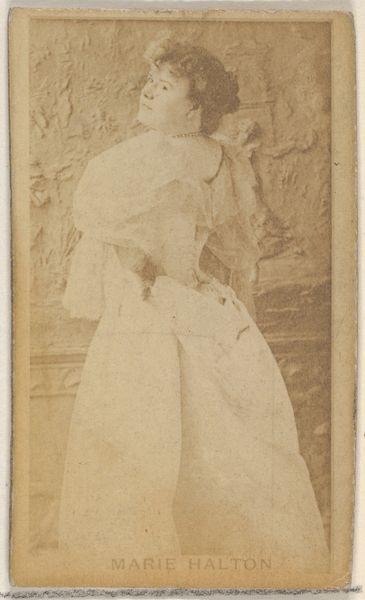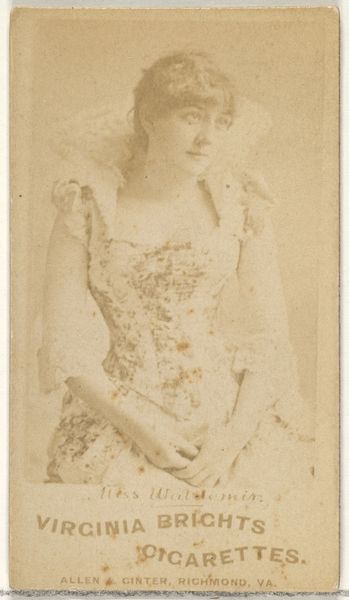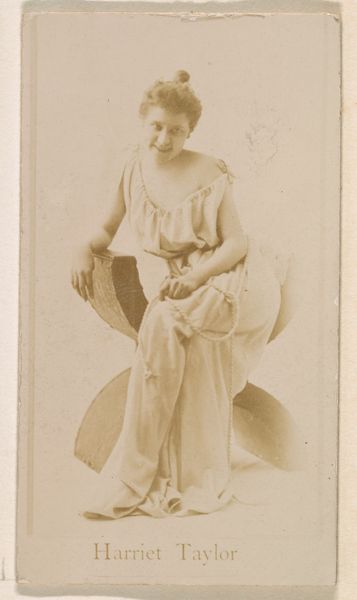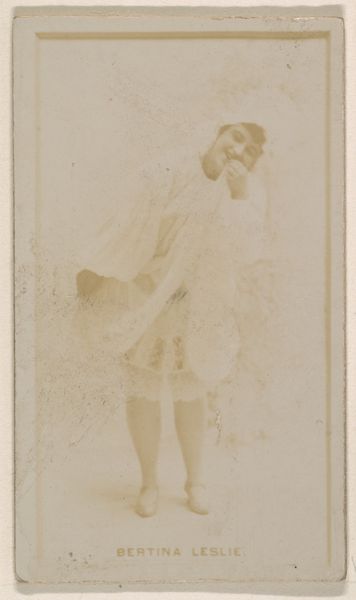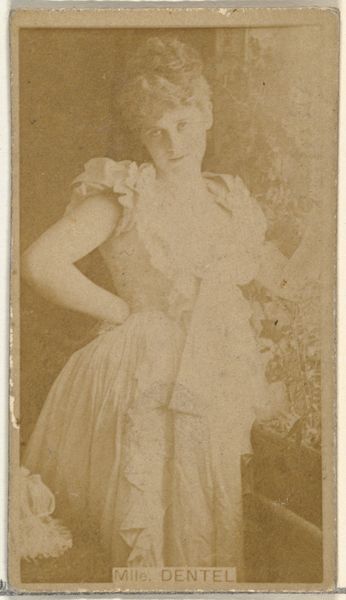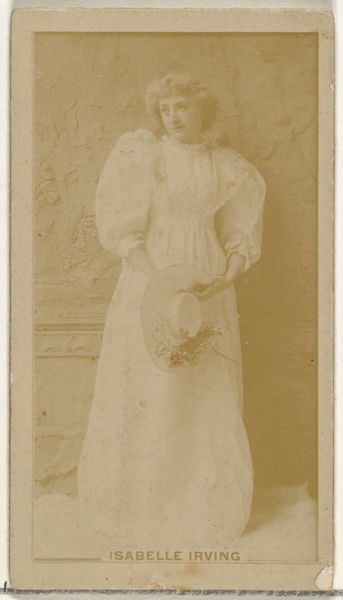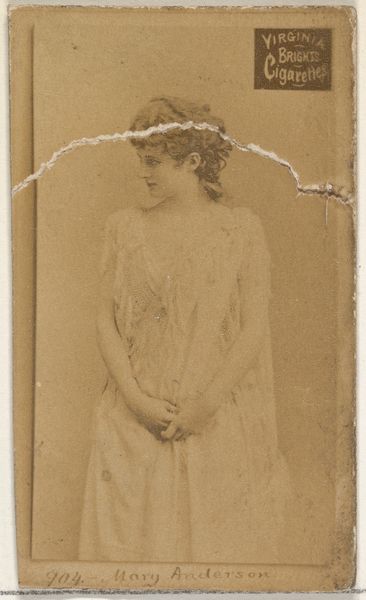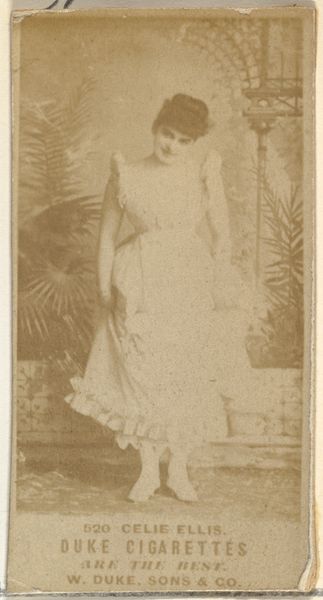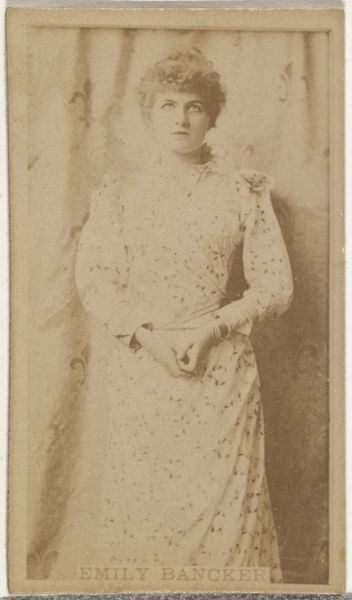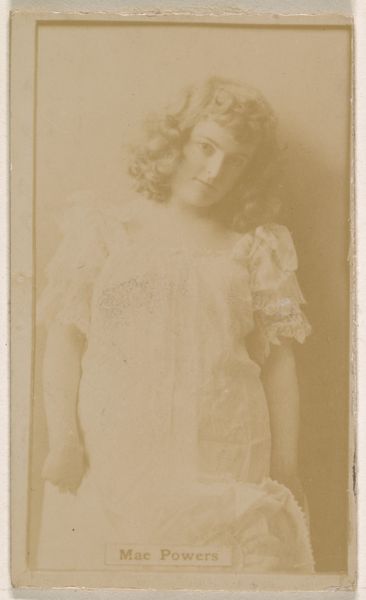
Miss Beesly, from the Actors and Actresses series (N145-8) issued by Duke Sons & Co. to promote Duke Cigarettes 1890 - 1895
0:00
0:00
Dimensions: Sheet: 2 11/16 × 1 3/8 in. (6.8 × 3.5 cm)
Copyright: Public Domain
Curator: What a delicate print! It's almost ghostly. Editor: Indeed. This is "Miss Beesly," a photograph issued as part of the "Actors and Actresses" series by W. Duke, Sons & Co. It was produced sometime between 1890 and 1895 as a promotional item for Duke Cigarettes. Curator: Cigarettes? So, this was essentially advertising. Fascinating! It speaks volumes about the commodification of beauty and celebrity culture at the time. One wonders about the production line—the scale of printing, the distribution methods... how many factory workers were involved in producing these cards that would then be dispersed, consumed, and perhaps discarded? Editor: Exactly. Think about the context: mass production and marketing of tobacco coincided with the rise of celebrity culture and photographic reproduction. These cards highlight how intertwined those things were. Circulating images like this shaped perceptions of beauty, fame, and, dare I say, the “good life," often masking the very real labor that produced it. Curator: I agree. The materiality itself - the thin card stock, the faded sepia tone - contributes to this ephemeral sense, further connecting this piece to production and consumption cycles that quickly move through society. Editor: I also think it reveals an interesting glimpse into the social lives and aspirations of people in that era, too. These cards offered affordable access to imagery that otherwise might only be seen by elites who had the time or money to engage with artistic portrayals of celebrities or those kinds of artworks. What stories might these objects hold if we could only trace them back to their original owners and circulation paths! Curator: True! Considering that many would be pasted into albums, traded, or even tucked into letters makes you consider its broader influence. Editor: Looking at "Miss Beesly," I'm struck by how everyday consumer objects carried so much social weight, silently reinforcing structures of labor, power, and representation. Curator: Right. And as a material artifact, it urges us to look past the surface and understand what created the thing itself—not only to value its cultural relevance but the real hands and machines that got it here! Editor: Precisely. "Miss Beesly" challenges us to interrogate the larger cultural machinery that was, and continues, shaping our perceptions and practices.
Comments
No comments
Be the first to comment and join the conversation on the ultimate creative platform.
